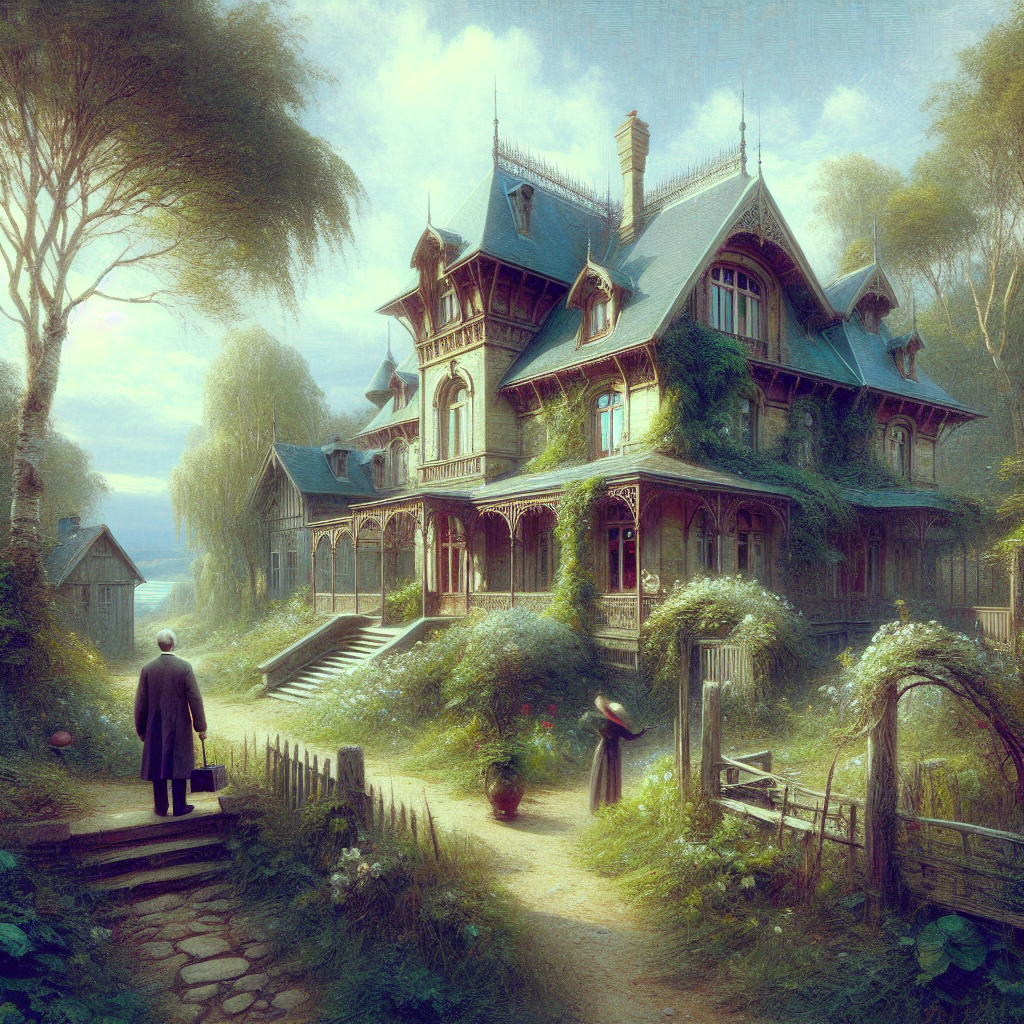Introduction to Emile Zola
Who is Emile Zola?
I regard Emile Zola as one of the most significant figures in French literature. Born in 1840, he is best known for his naturalistic approach, a style that emphasizes the influence of environment and heredity on human behavior. Zola’s life was dedicated to exploring the complexities of society and the human condition through his writing. His most renowned works include the monumental series “Les Rougon-Macquart,” which depicts the societal struggles of the lower classes in 19th-century France. For those interested in delving deeper into Zola’s literary creations, I highly recommend exploring the article on Emile Zola novels.
Significance of Emile Zola’s Works
Zola’s impact on literature cannot be overstated. His works not only shaped the naturalism movement but also paved the way for future authors to explore social issues through a realistic lens. He adeptly highlighted the struggles of the working class, addressed themes of poverty, and criticized social injustices prevalent during his time.
The table below summarizes some key aspects of Zola’s significance in literature:
| Aspect | Description |
|---|---|
| Literary Movement | Founder of Naturalism |
| Major Themes | Social issues, class struggle, moral dilemmas |
| Influence | Inspired future writers like Henry James and Frank Norris |
| Notable Works | “Germinal,” “Thérèse Raquin,” “Les Rougon-Macquart” |
Through Zola’s storytelling, I found that he not only entertained but also educated readers about the realities of society. Many of his texts remain relevant today, providing insight into historical and contemporary social dynamics. For a closer look at one of his key works, consider reading about Germinal by Emile Zola. As I dive deeper into Zola’s universe, I appreciate his ability to merge rich character development with powerful societal commentary, making his works essential reading for anyone interested in literature that challenges the status quo.
The Life of Emile Zola
Early Life and Background
Emile Zola was born on April 2, 1840, in Paris, France. His father was an engineer, and his mother, a woman of Italian descent, raised him in a middle-class environment. After his father passed away when Zola was just seven years old, his mother struggled to support him financially. This early exposure to hardship would later influence his writing.
Zola’s education began at the Lycée Saint-Louis, where he demonstrated a talent for literature. However, he faced challenges due to his family’s financial situation, which led him to leave school before completion. Despite this setback, his passion for writing persisted. He began working as an office clerk and soon immersed himself in the literary world, which ultimately guided him toward his writing career.
Career and Literary Achievements
Throughout his life, Zola became a pivotal figure in literature, particularly noted for his brilliant contributions to the naturalism movement. He synthesized his experiences and observations to produce a body of work that would define not only his career but also influence generations of authors.
A key phase in Zola’s career involved the Les Rougon-Macquart series, a collection of 20 novels that depict the lives of a single family over two generations. This work explores themes of heredity, environment, and society. Some noteworthy titles within this series include:
| Title | Year Published | Summary |
|---|---|---|
| “The Fortune of the Rougons” | 1871 | Introduces the Rougon-Macquart family. |
| “Germinal” | 1885 | A profound depiction of labor struggles, which I consider one of Zola’s most impactful works. Discover more about it in my article on germinal by emile zola. |
| “Thérèse Raquin” | 1867 | A dark study of passion and consequence. |
Zola’s realistic portrayal of everyday life and societal issues garnered both acclaim and criticism. He faced numerous challenges, including opposition from the literary establishment and political authorities. Despite this, he continued to write and engage in social activism, particularly speaking out against injustice, as seen in his famous open letter “J’accuse,” which defended Alfred Dreyfus, a Jewish army officer wrongfully convicted of treason.
Overall, Emile Zola’s life and work epitomize the struggle for social justice and artistic expression. His dedication to exploring the complexities of human existence remains a testament to his enduring legacy in literature. For more insights into Zola’s literary contributions, consider exploring his biography and extensive catalog of emile zola works.
Notable Works by Emile Zola
Emile Zola’s contributions to literature are significant, particularly through his various masterful works. I find that exploring his key literary pieces offers a deeper understanding of his themes and techniques.
“Les Rougon-Macquart” Series
The “Les Rougon-Macquart” series is perhaps Zola’s most ambitious project. Comprising twenty novels, it chronicles the lives of a single family over several generations, set against the backdrop of the Second French Empire. This series examines socio-economic issues, human behavior, and the impact of heredity.
| Title | Year Published | Key Themes |
|---|---|---|
| “La Fortune des Rougon” | 1871 | Family and ambition |
| “Germinal” | 1885 | Class struggle and labor rights |
| “Nana” | 1880 | Gender and sexuality |
| “L’Assommoir” | 1877 | Alcoholism and poverty |
For more insights on these novels, you can check my article on Emile Zola novels.
“Germinal”
“Germinal” is one of Zola’s most influential works. Published in 1885, this novel delves into the harsh realities of coal miners in 19th-century France. It encapsulates themes of struggle, solidarity, and the fight for rights against oppressive conditions.
| Element | Description |
|---|---|
| Main Character | Étienne Lantier |
| Setting | A coal mine in northern France |
| Themes | Class conflict, solidarity |
To explore more about this remarkable piece, refer to my article on Germinal by Emile Zola.
“Thérèse Raquin”
“Thérèse Raquin,” published in 1867, marks one of Zola’s early successes. This novel focuses on heavy themes of love, guilt, and moral consequences, portraying the turbulent relationship between Thérèse and her lover. It is notable for its psychological depth and exploration of the darker aspects of human nature.
| Element | Description |
|---|---|
| Main Characters | Thérèse, Laurent, Camille |
| Themes | Passion, guilt, revenge |
Zola’s ability to create complex characters in “Thérèse Raquin” illustrates his expertise in crafting narratives that resonate with real-life dilemmas. For a more comprehensive view of Zola’s life and work, check out my article on Emile Zola biography.
Themes in Emile Zola’s Works
Emile Zola’s literary contributions are rich with themes that delve deep into human nature and society. I find examining these themes essential for understanding the impact of Zola’s works.
Naturalism in Literature
Naturalism is a dominant theme in Zola’s works. He believed that literature should reflect life in its rawest form, devoid of romantic illusions. Zola’s naturalistic approach portrays characters shaped by their environment and heredity, emphasizing the influence of biology and social conditions on human behavior.
The table below provides a brief overview of significant elements of naturalism in Zola’s works.
| Element | Description |
|---|---|
| Environment | Characters are often products of their surroundings |
| Heredity | Genetic influences play a crucial role |
| Objective Observation | Stories are told with a detached, scientific lens |
For more insight, consider visiting my article on naturalism literature.
Social Realism
Zola’s works also closely adhere to the principles of social realism. He highlights the struggles of the working class and critiques the societal structures that contribute to their hardships. Through detailed portrayals of poverty, labor conditions, and class conflicts, Zola calls attention to social injustice.
Some of Zola’s most notable works, including those in the emile zola novels category, reflect these themes. A prime example is Germinal, which I’m particularly drawn to for its unflinching exploration of miners’ lives, their toil, and their fight for rights against the backdrop of industrialization.
Political Commentary
Zola was not just a novelist; he was also a political activist. His writings contain sharp social and political commentary, advocating for change and highlighting societal issues. His famous open letter, “J’accuse,” addressed anti-Semitism and the miscarriage of justice, showcasing his belief in the need for accountability and reform.
In many ways, Zola’s works serve as a mirror that reflects the political climate of his time while prompting readers to engage in crucial social discussions. If you want to explore more about Germinal, visit my article on germinal by emile zola to understand its significance in both literature and society.
Zola’s themes of naturalism, social realism, and political commentary weave together a complex yet captivating examination of the human experience and its broader implications. For a broader understanding of Zola’s life and impact, you can look at his biography.
Legacy of Emile Zola
Influence on Literature and Art
Emile Zola’s impact on literature and art is profound and far-reaching. His pioneering work in naturalism set a new benchmark that numerous writers and artists have aspired to follow. Through his meticulous detail and emphasis on the environment’s influence on human behavior, Zola brought a new level of realism to storytelling.
Zola’s narrative style and thematic concerns have also influenced various literary movements, including modernism. His commitment to portraying the struggles of the working class and the challenges posed by industrialization resonated deeply not only in literature but also in visual arts. Artists have drawn inspiration from his vivid descriptions, allowing them to incorporate the struggles and realities of society into their work.
| Influence Area | Description |
|---|---|
| Literature | Zola’s naturalism inspired writers like Theodore Dreiser and Frank Norris. |
| Theatre | His works have been adapted into numerous stage productions, reflecting on social issues. |
| Visual Arts | Artists, such as Gustave Courbet, were influenced by Zola’s depictions of everyday life. |
Continued Relevance of Zola’s Works
Zola’s works remain relevant in today’s society as they confront themes that continue to resonate. Discussions surrounding class struggle, poverty, and social injustice are as pertinent now as they were during his lifetime. The layered narratives found in his writings, particularly in novels like Germinal by Emile Zola, serve as a powerful commentary on ongoing social dilemmas.
Readers today can find parallels between Zola’s observations of life in the 19th century and contemporary issues. As I explore these texts, I notice that the insights offered by Zola prompt critical conversations about equality and human rights, illuminating that literature is a transient conversation across time.
Zola’s influence is further emphasized in educational settings, where his works are frequently included in literature curricula. They provide invaluable insights into not only literary techniques but also significant historical contexts. For an in-depth exploration of Zola’s famous novels, visit our article on Emile Zola novels. His legacy, thus, continues not only in literary circles but in broader discussions about society and humanity.

